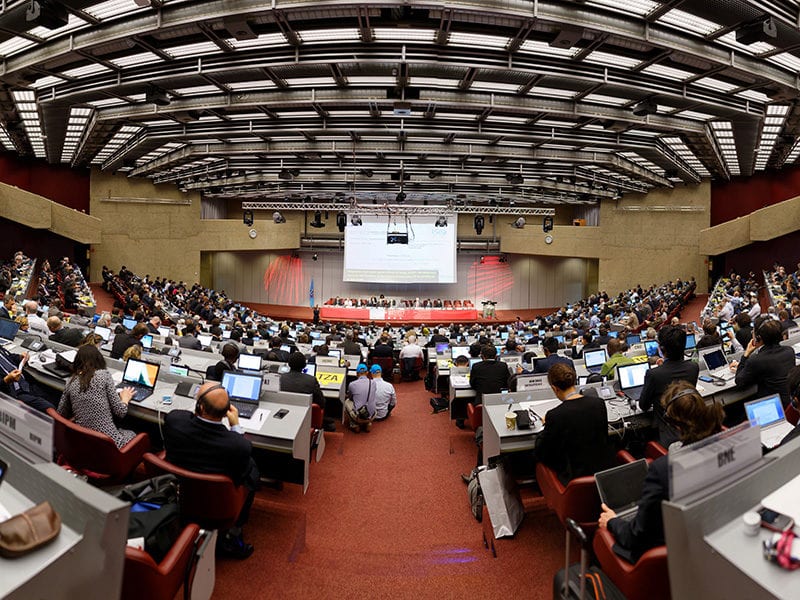Latest News

The WRC 2019 conference preparatory meeting. Photo: ITU
The 2019 World Radiocommunications Conference (WRC) kicks off next week. More than 300 delegates from all countries across the world are gathering in Egypt to update the International Telecommunications Union (ITU) Radio Regulations to enable the most advanced radio-based communications services to be deployed on the ground and in space. Held every three to four years, the conference ensures that regulatory policy keeps up with the rapid advances in technology. Given the pace of progress since the last gathering in 2015, this year’s conference holds the promise of exciting discourse on issues of critical importance to satellite operators.
WRC will tackle key developments, including making spectrum available for 5G, enabling greater flexibility for radio services operations and guarding against speculation by Non-Geostationary Orbit (NGSO) satellites. For Geostationary Orbit (GEO) satellite operators, there are a collection of WRC agenda items that will shape the future of our business:
Agenda Item 1.5, Earth Stations in Motion
This item will enable flexibility for fixed satellite operators to deploy earth stations in motion to support growing calls for broadband connectivity in motion — whether in the air, on the ground or on the sea in key satellite frequency bands.
Agenda Item 1.6, Protection for the Earth Exploration Satellite Service (EESS)
the EESS is seeking protection from GEO operators in the 50 Gigahertz (GHz) band. Satellite operators are looking for reasonable protections to be imposed after an adequate grandfathering period.
Agenda Item 1.13, More Spectrum for IMT
This item is identifying spectrum for terrestrial mobile use (5G) in the bands above 24 GHz. Several of these bands are shared with satellite broadband operators who are looking for adequate protection/recognition in these bands to enable operations and, where appropriate, sharing with terrestrial operators.
Agenda Item 1.14, High Altitude Platforms (HAPs)
This item seeks to identify additional spectrum for HAPs or to provide greater flexibility for HAPs operations. Once again, ensuring adequate protection for satellite in the shared bands are key.
Agenda Item 7
This item is seeking to develop milestones for NGSO systems to guard against spectrum speculation.
Agenda Item 9.1.1, Compatibility in the S band
This item is focused on studies to ensure compatibility between mobile satellite service and the mobile service in the band among adjacent countries. As this is an agenda item that should not adopt in any regulatory changes, no change is likely the result based on studies at the ITU.
Agenda Item 9.1.9, More FSS Spectrum
This item is looking at making available 1 GHz of much needed spectrum to the fixed satellite service at the 51.4 to 52.4 GHz band.
Agenda Item 10, Future Agenda Items for 2023 Conference
Numerous proposals have been made. Among the most likely going forward including studying the use of certain bands for inter-satellite links between GEOs and NGSOs and making additional spectrum available for a number of services including the fixed satellite service, where demand continues to increase.
We aim to advance policies that support our objectives of connecting the unconnected, creating a ubiquitous and interoperable network with satellite as a vital part. We look forward to a vibrant exchange of ideas at the conference and anticipate important changes that will enable the most advanced services to our users around the world.

Jennifer Manner is the senior vice president of regulatory affairs at EchoStar.
Get the latest Via Satellite news!
Subscribe Now